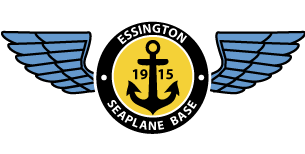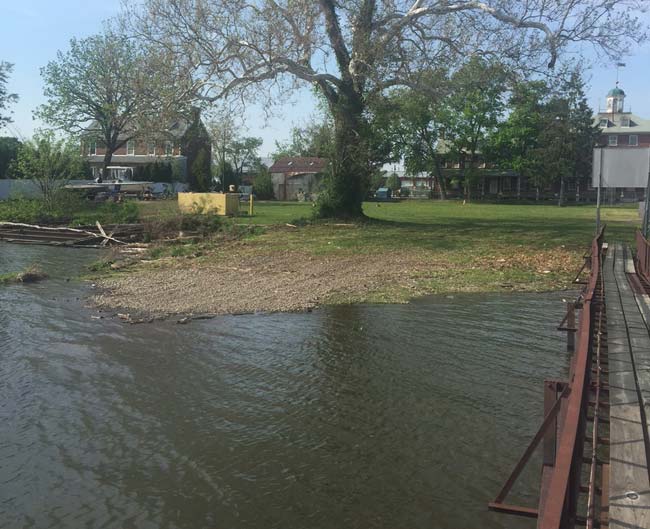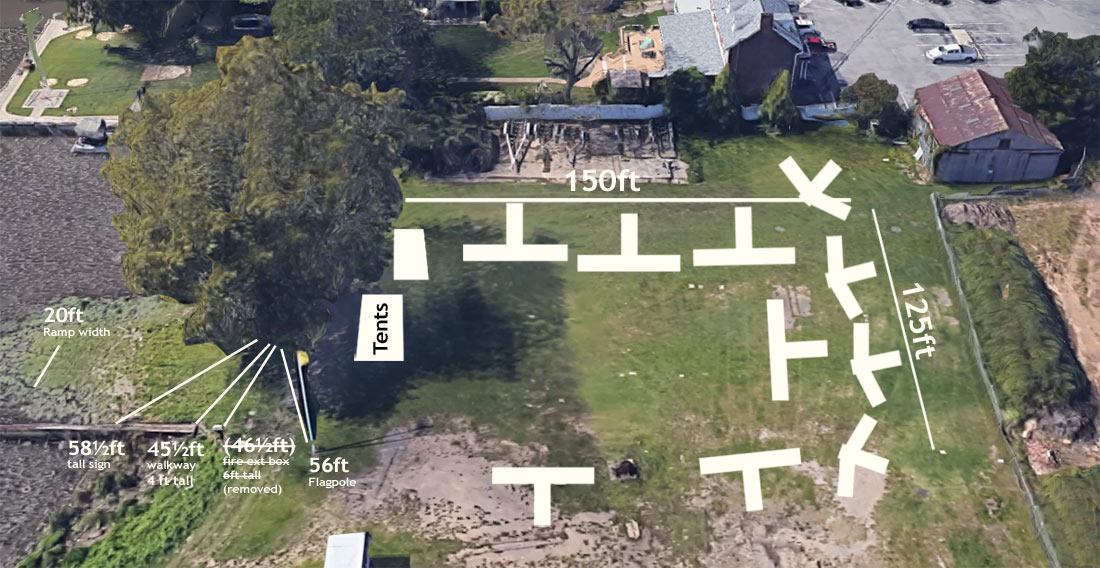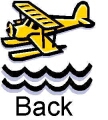Last Updated: March, 2022

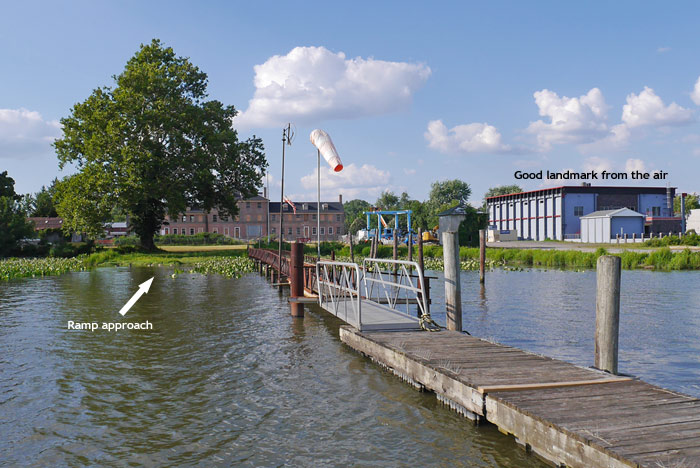
Philadelphia SPB (9N2)Contact: Rob Dant (advocate) Phone: 484 301 0879.
N39-51.54; W075-17.98. Elevation: 0. TPA: 250 msl.
Sealane: 11-29 9100 x 250, fresh wtr, rgt tfc rwy 11.
CTAF 122.9 (unmonitored)
More base info available at AirNav.com
Floating Dock
The floating dock is in good shape, and the gravel ramp (left of dock) is usable at high tide +/- 3 hour. Note, river material washes up every day with the tide, possibly making the ramp unusable without cleanup.
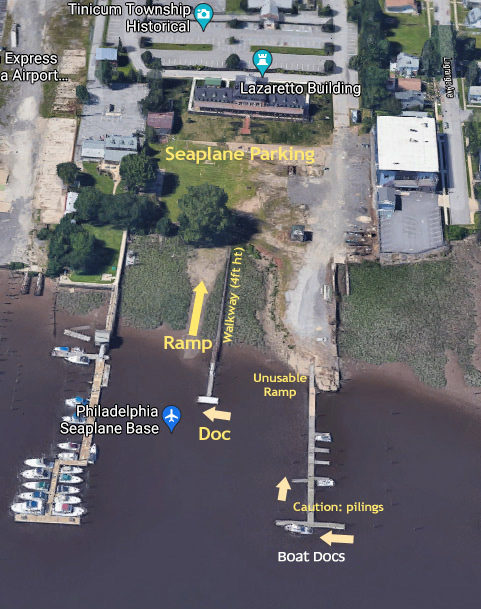
Water Condition:
The Delaware River at Tinicum is fresh water according to the Delaware River Basin Commission which monitors the brackish salt line (which they define as greater than 0.25 gram/liter = .25ppt (thousand) = 250ppm = 0.025%). FYI, Wikipedia defines brackish as between 500ppm up to 3000ppm. The median brackish line is between the Delaware Memorial Bridge and the Commodore Barry Bridge, south of the base. The Oct 2014 drought was just south of the Commodore Barry Bridge, 4 miles south of the base. During very extreme drought, the river can become brackish at Tinicum.
Spotting the base from the air:
You’d think it’d be easy to spot, with the big Lazaretto house and two wind socks. The best landmark is the large, boxy, medium blue industrial building next door to the east. The seaplane base is adjacent to the west.
Approach:
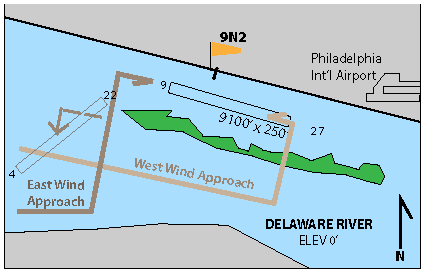
The typical approach to 9N2 is from and underneath the west side of Class B. The approach cutout ceiling is 600 feet and the sea lane is 300 feet.
WEST WINDS: The sea lane is on the north side of Tinicum Island with a 300 ft ceiling (the Class B terminal chart floor should be drawn north of the island – See 1953 CAA Sea Lane diagram signed by Bob Mills). We typically fly down the south side of the island, eastbound at 250 ft. Turn base by mid-island, fly over the island and land to the west. Any farther east, and you are entering Class B. Jet traffic climbing out of runway 27 Left is at a good attitude by that point and wake turbulence isn’t an issue.
EAST WINDS: This approach is easier, but jets landing runway 9 right present a wake turbulence concern. Fly down the south (NJ) side of the river, then turn right base in order to see the approaching jets from the west. If timing doesn’t look good, then fly westbound again and come around for another approach.
NORTH/SOUTH WINDS: Not a typical approach, but Bob Mills charted a runway 4/22 from Chester Island to the west end of Little Tinicum Island. Watch for large boat wake and obstacles near the tip of Little Tinicum Island.
Generally, land into the wind without regards to tidal flow.
Watch Rob Robertson’s video flying in.
Air Traffic Control:
Communication with approach is at pilots discretion (119.75, 124.35, 128.4). They are not always familiar with the seaplane base. It’s useful to monitor west tower (135.1) and call them if desired to announce your approach. For special events, the Philadelphia ATC Operations Desk can/will be contacted in advance at 215 492 4123. Note: Bob Mills flew out of the seaplane base for many decades without radios or transponders. Philly ATC is usually good as long as we remain clear of their operations.
Approaching Dock:
Approaching the floating dock, river flow may be important. At its highest rate, the river may flow up to 5mph. The dock is approachable from 3 sides and sits 15 inches out of the water with no poles. There is a windsock on the stationary walkway leading to the floating dock.
Gravel Ramp:
The gravel ramp is to the left as you approach the floating dock, between the big Sycamore and the walkway. There is a 6-foot tide here that washes debris onto the ramp twice a day, making it unusable except on days where it has been mowed and cleared of debris.
Approach at a slight angle. The distance between the tree and the 4-foot high walkway is just over 45 ft. Th flagpole and tree are 54 feet. The ramp is in decent shape at high tide +/- 3 hours, but may be unusable at lower tides due to metal plates at low tides .
.
Ramp at low tide 2021:
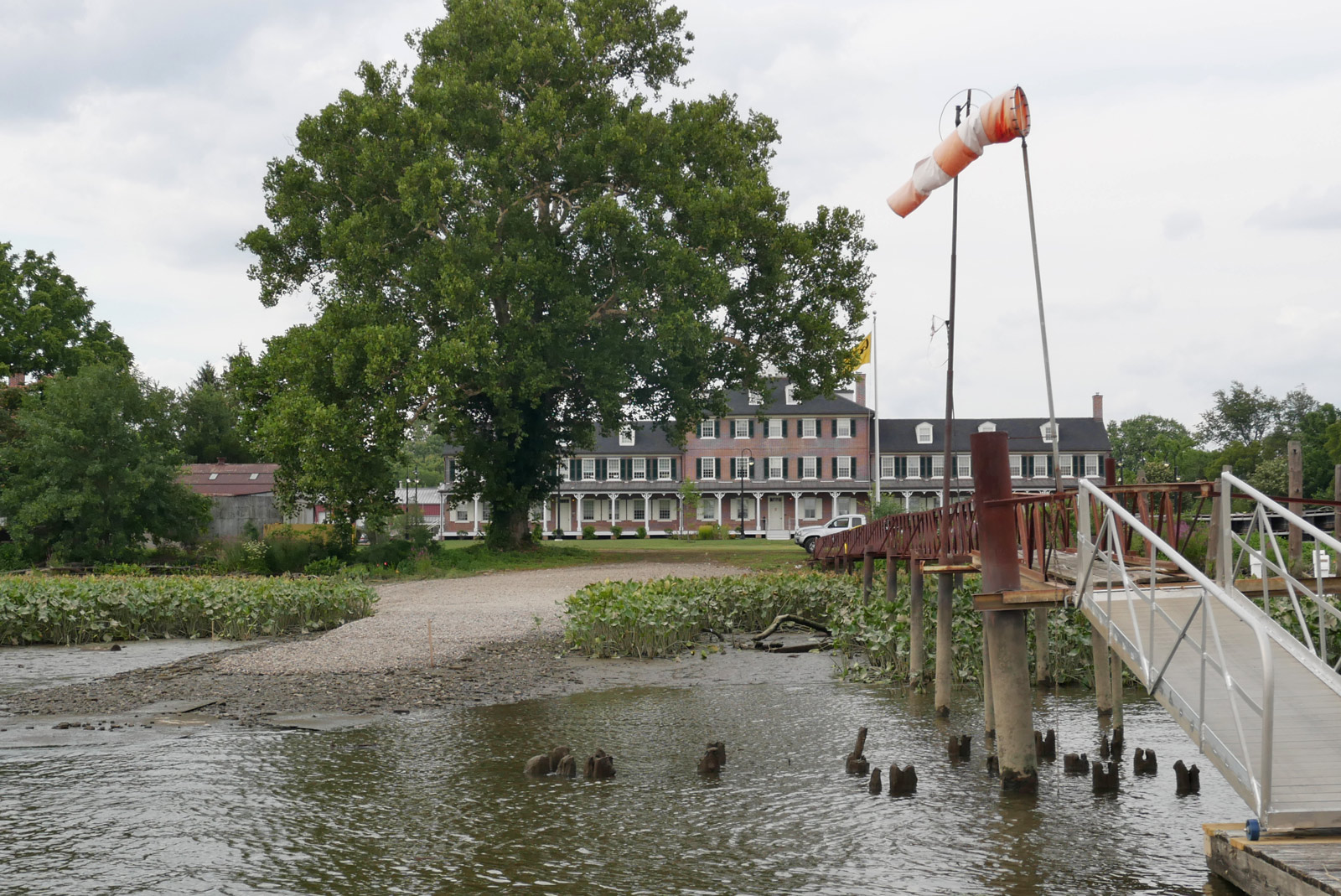
Splash In:
We could fit 12+ seaplanes on the grass and a couple at the floating dock.
